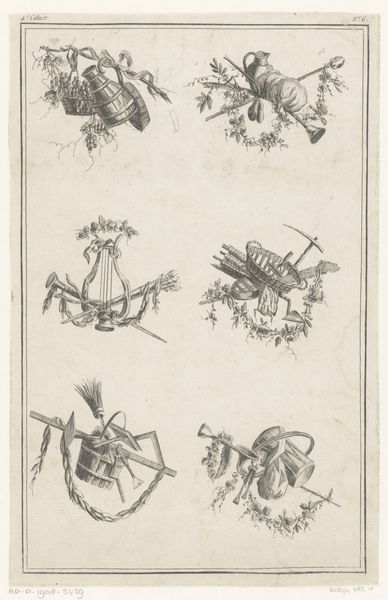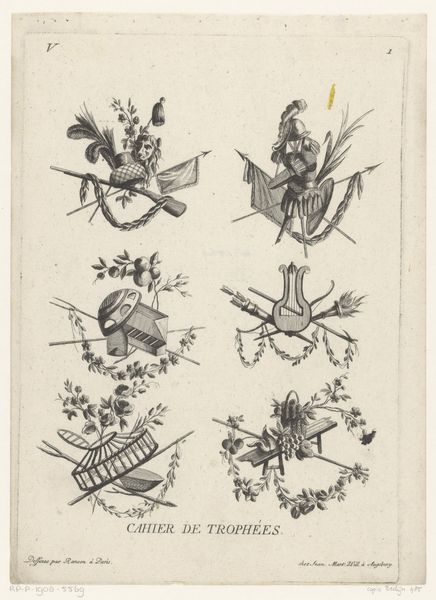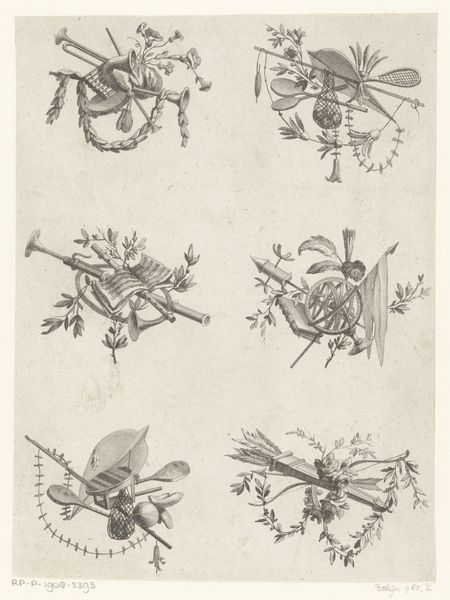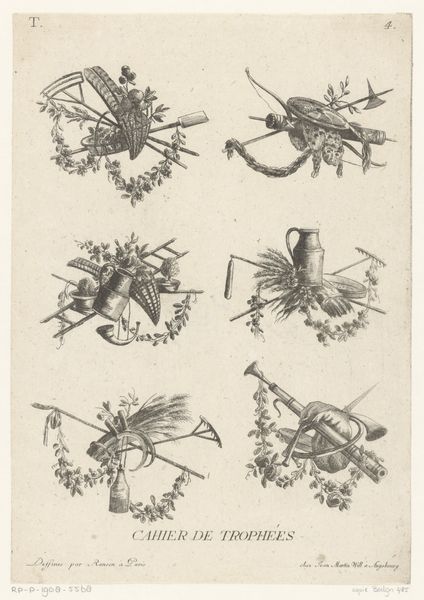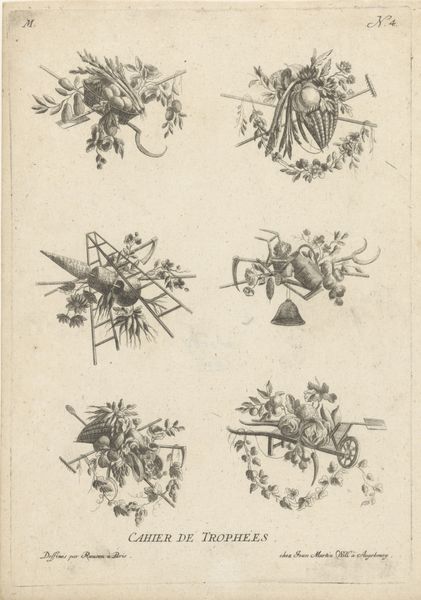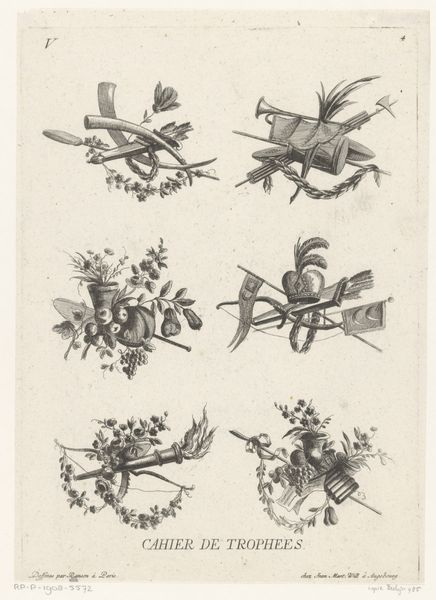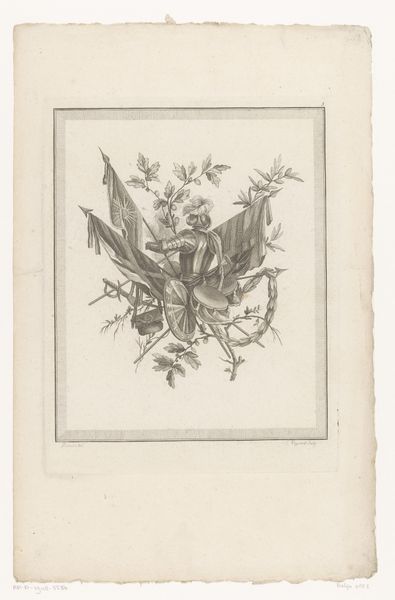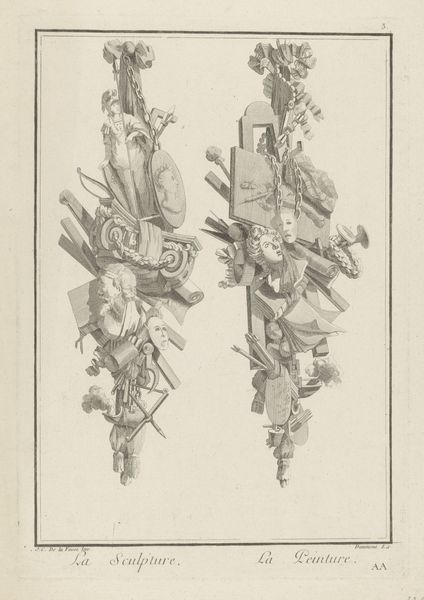
Trofeeën met wapens, jachtattributen en muziekinstrumenten 1777 - 1779
0:00
0:00
Dimensions: height 317 mm, width 206 mm
Copyright: Rijks Museum: Open Domain
Editor: This is "Trophies with Weapons, Hunting Attributes and Musical Instruments," an engraving from between 1777 and 1779 by Jacques Juillet. It features these clusters of objects—musical instruments, weapons—all intertwined with leafy wreaths. What strikes me is the odd juxtaposition of symbols of war and refinement. How do you interpret that? Curator: It's fascinating, isn't it? These "trophies" weren't intended as celebrations of brutal conquest. We need to consider the context. It comes from a period rife with social and political unrest leading up to the French Revolution. This image reflects an elite class clinging to symbols of power and leisure—military prowess, the hunt, artistic pursuits. But notice how they're softened, made decorative, almost frivolous? What does that softening suggest to you? Editor: Almost a denial, maybe? A way to prettify realities? The way the items are decoratively strewn almost hints that these concepts could be considered interchangeable. Curator: Exactly. They're being reimagined for a decorative purpose. Consider also the social inequalities. These “trophies” would likely be displayed in opulent homes, silently reminding everyone of the owner's status. Doesn't this kind of casual display raise questions of access, power, and the very definition of "trophy?" Is it earned, inherited, or simply displayed? Editor: I see what you mean. It shifts from being just a decorative print to something with a sharper commentary on privilege. It makes me think about how those kinds of images reinforce social hierarchies. Curator: Precisely. And those visual cues become ingrained, normalizing a particular worldview. Even seemingly innocuous images like this can reveal much about the social and political tensions of the time. Editor: So it becomes a conversation, not just about aesthetic, but also about how art is used to make statements about power structures. Curator: That’s exactly it. It is all connected. And once you see that, art history can give us vital tools for understanding our present.
Comments
No comments
Be the first to comment and join the conversation on the ultimate creative platform.



